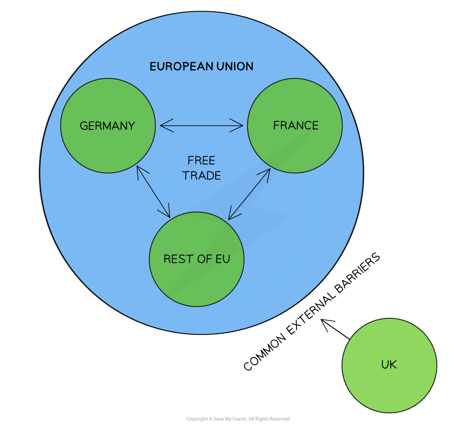Types of Economic Integration
- Economic integration occurs as countries reduce trading barriers between themselves and become more interdependent
- A trading bloc is a group of countries who come together and agree to reduce or eliminate any barriers to trade that exist between them
- Each subsequent type of trading bloc has increased levels of economic integration
Different Types of Trading Blocs
Trading Bloc |
Explanation |
Free Trade Area |
|
|
Customs Union |
Diagram: A Customs Union
|
|
Common Market E.g. Single European Market (SEM) |
|
|
Monetary Union |
|


